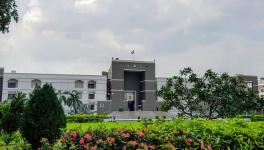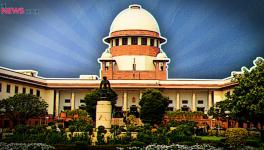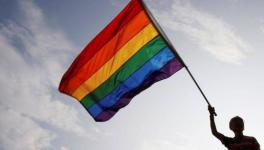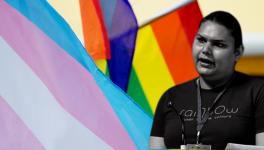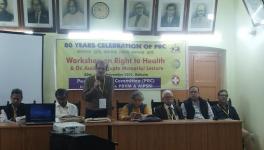Section 377: Story of an Ongoing Struggle

History owes an apology to the members of the LGBTQIA+ community and their families for the delay in providing redress for the ignominy and ostracism they have faced through the centuries,” said Indu Malhotra, one of the five judges of the Supreme Court’s Constitution Bench while delivering the historic Navtej Johar judgement.
In that year-old judgement, section 377 of the Indian Penal Code—a statute loaded with Victorian morality that barred intercourse that does not lead to procreation—was read down. Thereafter, consensual relations involving the LGBTQIA+ or Lesbian, Gay, Bisexual, Transgender, Queer, Intersex, Asexual and non-heteronormative identities, are no longer criminalised in India. The community is legally ‘free to express desire’, so to speak.
The Supreme Court had in 2014 proclaimed the NALSA judgment. In it, the court had accorded the transgender community the right to be called the third gender, separate from males and females. Transgender individuals could now seek legal, political and economic rights and seek legal redress if they are discriminated against. (It is worth noting that the current government has passed a Transgender Bill in Parliament which has been criticised for being regressive).
The same year, a group of LGBTQIA+ activists including the celebrated dancer Navtej Singh Johar filed petitions against Section 377. These petitions were heard in 2016.
On the one hand, the NALSA judgment made it incumbent on courts to give equal rights to the transgender community. On the other hand, the court ruled that the right to privacy is a fundamental right. These two judgements gave the final push to the decades-long legal battle for decriminalisation of consensual same-sex relations.
Legalising gay marriages
Many developed countries are moving towards legalising gay marriages. This is a debate within the LGBTQIA+ community in India as well. Marriage, for some, is a possible choice for LGBTQIA+ individuals while others view marriage as a repressive heteronormative institution: they feel gay marriage would further institutionalise patriarchy.
Just because the law changes does not mean that society, too, has changed. It was 1998 when Deepa Mehta’s film Fire was released. It vividly revealed the treatment that the LGBTQIA+ community receives in India. Members of the right wing shut down theatres, burned the film’s posters and banners and attacked its crew.
Read More: Pride is Political: 50 Years Since Stonewall
Even today, the conservative elements of society would resist attempts by homosexuals to view marriage and other rules on their own terms. This relates to another aspect of the section 377 ruling: It examined sexual relations in great detail while leaving the other wide gamut of legal issues, implications and rights for legislatures to decide.
On the basis of NALSA and the August 2017 privacy ruling, the court determined that Constitutionally it is not possible to criminalise certain forms of sexual activity only for LGBTQIA individuals. These two judgement gave a final push to the decades long legal battle being fought. The time to open up other aspects than intercourse—housing, marriage, adoption etc—to discussion is perhaps now.
India does not recognise gay marriage or civil unions. That said, even in other countries, these changes were brought in very slowly. The question is, why de-criminalise sexual intercourse but not change the ground rules to usher in relationship and marriage equality? Also, it was always expected that once de-criminalised, the movement to demand marriage and property rights, and adoption rights too, would pick up.
The LGBTQIA+ community now refuses to be pushed back into the closet. A great many voices mobilised across the country to build support against a section that criminalised the community. It is crucial to observe that things have changed ever since ‘Fire.’ Popular culture has more openly embraced the non heterosexual identities and the audience has become more tolerant.
This would not have been possible without a constant effort to create awareness, mainly by the LGBTQIA+ community, to build solidarities with other struggles. That is why this appears to be an exclusively legal struggle, when that could not be further from the truth.
The pride march, for example, is employed by the movement to garner visibility for the LGBTQIA+ identities. No longer an exclusive event, it attracts caste and class struggles from across the country. Such solidarities are not mere appropriations but a genuine effort to understand one another’s struggles.
Also Watch: LGBTQ Pride Walk in Chennai: Happiness Follows Acceptance
In 2015, Delhi Queer Pride raised caste discrimination from within the LGBTQIA+ movement, opening space for a discussion on Dalit-Queer identity. In 2019, the Chennai Rainbow Pride march was also called “self respect march,” reflecting Periyar and Ambedkarite ideas.
There also have been protest and pride marches that have brought Left movements and class struggles together. After the Supreme Court overturned the 2009 Delhi High Court judgement the Communist Party of India (Marxist) was the first political party to condemn it—and the only party to mention it in its election manifesto.
Delhi pride marches have always involved Left student bodies of Jawaharlal Nehru University and Delhi University. Protests after Hyderabad Central University student Rohith Vemula’s suicide—which has been classified an institutional murder—had active participation of the community. So was the case with protests against murders of rationalists.
The question raised by the demand that marriage, adoption and property rights be equally administered regardless of gender and sexual preferences is that the feminist and LGBTQIA movements are often at variance—if not odds—with each other, especially on the question of marriage.
This legal battle was not necessary only because it promised the rights but it was the question of equality, fraternity, dignity, life and liberty. The mere presence of this Section had estranged the community off the very dignity that every citizen of the country is guaranteed.
Mihir Samson, a Delhi based Lawyer, observes “In the year that has followed the Supreme Court decision reading down Section 377 of the Indian Penal Code, a number of LGBTQ-identifying persons have approached the courts to assert their rights.”
“Days after the Supreme Court’s verdict in Navtej Johar, the Kerala High Court allowed the petition of a woman directing her female partner to be released from the forced confinement of her family. In October, the Delhi High Court granted police protection to two women who fled their home town facing threats of violence. In November, another Delhi High Court bench ordered release of a woman whose family had ‘kidnapped’ her from a police station after forcefully separating her from her partner, who identified as a trans man.”
The hard-hitting documentary, Shock Therapy, Forced Marriage: Life of Small-Town Lesbian Couples, shows the everyday struggle of the community for acceptance. As the film shows, homosexuality is pathologised and various attempts are made to “cure” it. Torture and death are the result of many such efforts. The struggle against these practices and everyday violence continues.
Also Read: Ray of Hope in the Legal Battle of the Queer Movement in India
Get the latest reports & analysis with people's perspective on Protests, movements & deep analytical videos, discussions of the current affairs in your Telegram app. Subscribe to NewsClick's Telegram channel & get Real-Time updates on stories, as they get published on our website.










